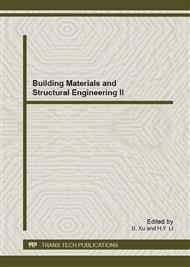p.199
p.203
p.208
p.213
p.218
p.223
p.227
p.231
p.237
Structure and Properties of CNT-PbO2 Anodes on Stainless Steel
Abstract:
An ideal anodes used for the electrochemical oxidation of organic wastewater should have excellent activity, stability and high oxygen evolution potential. In this paper the CNT (Carbon Nanotubes)-PbO2 films electrodeposited on stainless steel were prepared. X-ray diffraction (XRD) patterns and SEM images indicated that CNT particles and PbO2 were able to achieve co-deposit and the composite CNT-PbO2 films were compact. The cyclic voltammograms of the CNT-PbO2 films studied in 0.5M H2SO4 at a scan rate of 100 mV/s showed that the CNT-PbO2 film has high electrochemical stability. The results of wastewater treatment indicated that the CNT-PbO2 anodes have excellent activity in ammonia wastewater treatment.
Info:
Periodical:
Pages:
218-222
Citation:
Online since:
August 2013
Authors:
Keywords:
Price:
Сopyright:
© 2013 Trans Tech Publications Ltd. All Rights Reserved
Share:
Citation:


